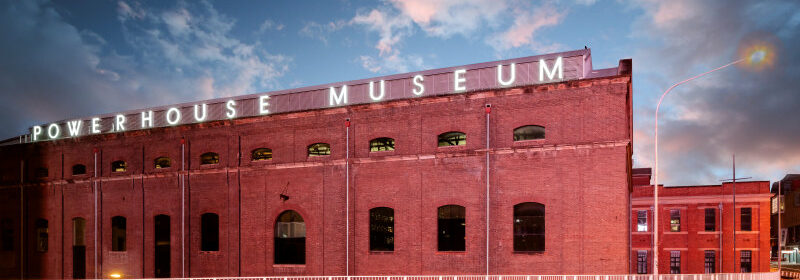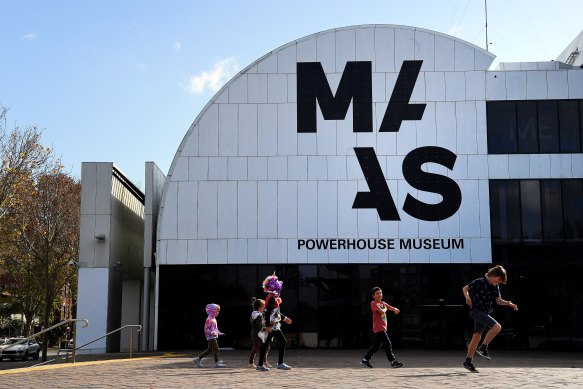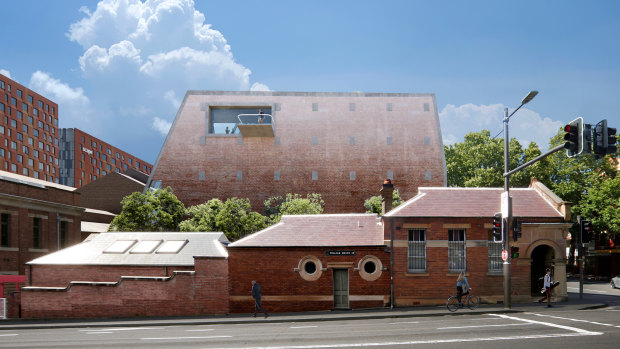Second report casts doubt on Powerhouse demolition plans

Save articles for later
Add articles to your saved list and come back to them any time.
A second study critical of the plan to demolish the Powerhouse Museum at Ultimo has added to pressure mounting on the Minns government to step in and halt the $500 million redevelopment.
The Powerhouse Museum was named as an example of the state’s best-built heritage of the last quarter of the twentieth century, alongside 33 other buildings likely to be of state heritage significance in the report by architects Robertson & Hindmarsh.
The report was commissioned to provide Heritage NSW with expert guidance about the comparative value of the museum’s modern extensions that were left off the heritage list in 2020. The study’s findings add weight to the work of eminent heritage architect Alan Croker, who found the modern extension deserved to be conserved and protected.
The curved steel roof of the Wran Building.Credit: Kate Geraghty
Only a core group of 19th-century buildings on the Ultimo site – dating to its use as a powerhouse for the Sydney tramway – have been granted heritage protection. Croker’s contract was abruptly terminated by the government’s arts agency before making his preliminary assessment. Create NSW denies it was because of the content.
The Robertson & Hindmarsh report rated the Powerhouse on a shortlist of buildings deemed of architectural or design merit. Two of three appendixes are missing from the publicly available copy of the report in Heritage NSW’s digital library.
The new Powerhouse Ultimo design.
But the Herald can disclose that the missing documents for the Powerhouse quote the museum complex as historically and architecturally significant for its reuse of existing industrial buildings in “one of Sydney’s largest and more successful architectural adaptions”.
These architectural elements, namely a steel curved roof structure along Harris Street and a central glass galleria that forms the current entrance, will make way for a new annex along Harris Street under the $500 million redevelopment which is scheduled to start in December.
As one of the few remaining legacies of the former Wran government, Croker says he wants to be able to complete his draft conservation plan.
“In order to protect its important values, whilst still allowing change, it is essential that no further works or changes be done on the site that could threaten or compromise these values until an appropriate and comprehensive set of conservation policies and guidelines for change are in place,” he said.
Architect of the 1988 adaption, Lionel Glendenning says the new plans effectively reduce the museum to the brick shell of the former power station, as if the Powerhouse Museum had never existed.
He has urged heritage listing for the entire site and estimated the government could save taxpayers $250 million if it limited the scope of redevelopment and concentrated on re-opening shuttered exhibition spaces, reversing unsympathetic alterations, completing overdue maintenance, and opening entry to the Goods Line.
“It’s a simple fix, the building is in reasonable condition for the circumstances, and it’s had 20 million visitors in 30 years,” he said. “At a time when the government is struggling to find money for health and transport, I think it’s an absurdity to spend so much money on a crazy brief. Like all buildings, they just need to be looked after.”
The Robertson & Hindmarsh report said the steel and glass vaulted additions, awarded the Sir John Sulman Medal for architectural excellence, were aesthetically significant, expressing the exuberance and confidence of a rejuvenated institution, the report said.
Other late 20th-century buildings also named as probably significant alongside the Powerhouse include Mt Druitt and Westmead Children’s Hospital, Berowra Waters Inn, Sydney Olympic Park including the railway station, and the Lindfield Learning Centre.
Docomomo Australia, a national organisation promoting the conservation of modern buildings, said it had not seen Croker’s document but was disappointed that the former NSW Government might suppress a report with which it didn’t agree.
Heritage listing for all the museum site was not supported in 2020. It was held that though the Wran building was innovative for its adaptive reuse of the site, it impacted the visibility and legibility of the State Heritage listed buildings within the site, including the former Power House buildings, and the Ultimo Post Office.
NSW heritage minister Penny Sharpe and arts minister John Graham have been contacted for comment.
The Booklist is a weekly newsletter for book lovers from books editor Jason Steger. Get it delivered every Friday.
Most Viewed in Culture
From our partners
Source: Read Full Article

